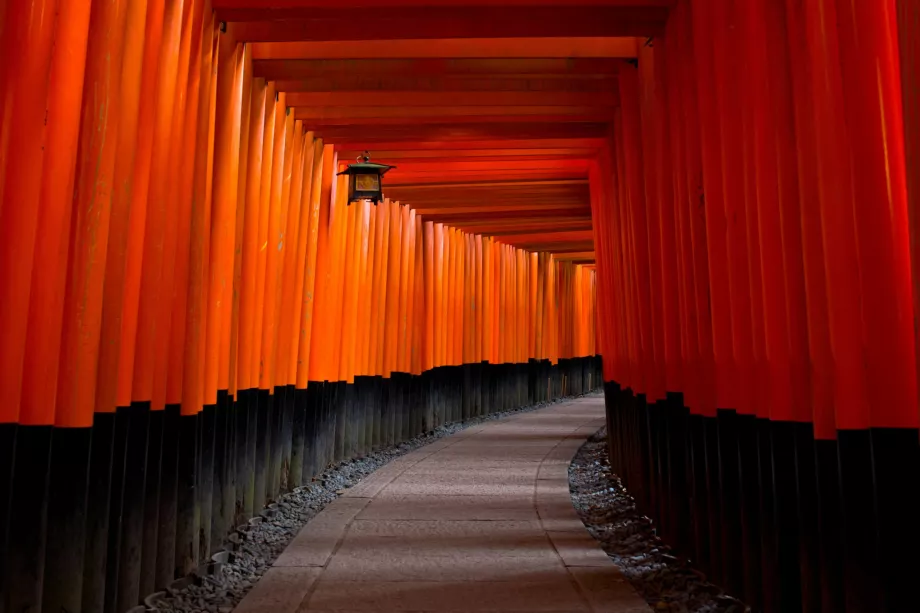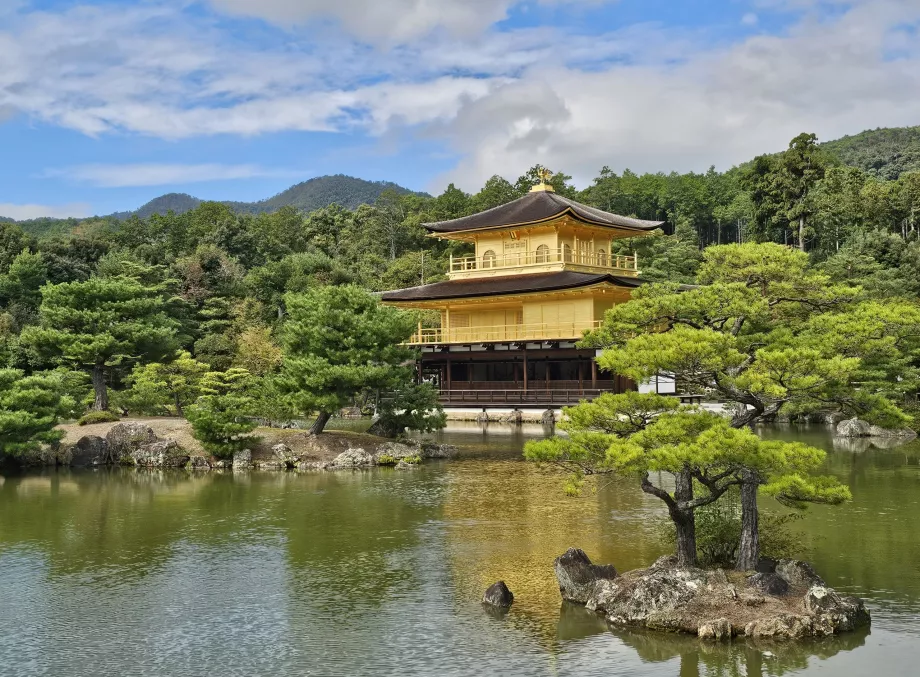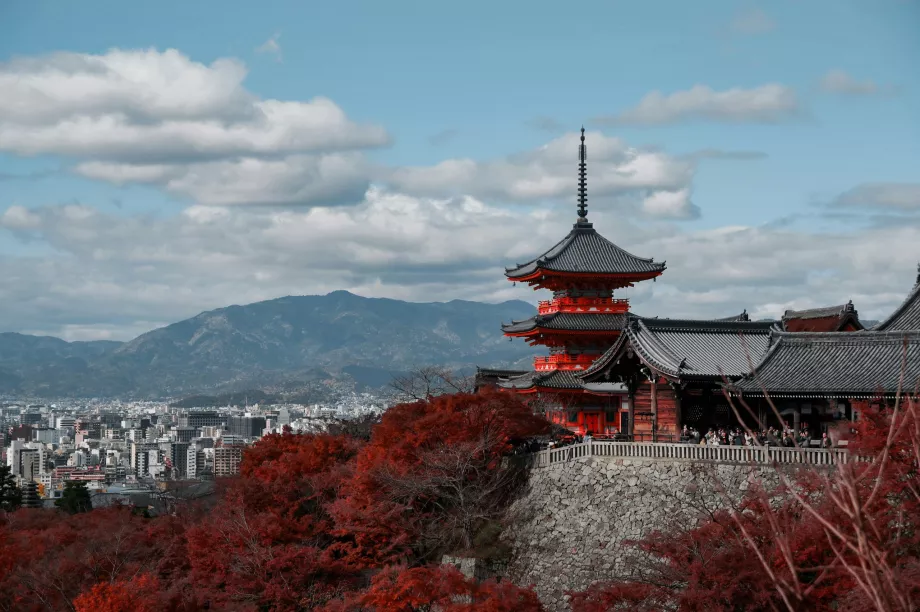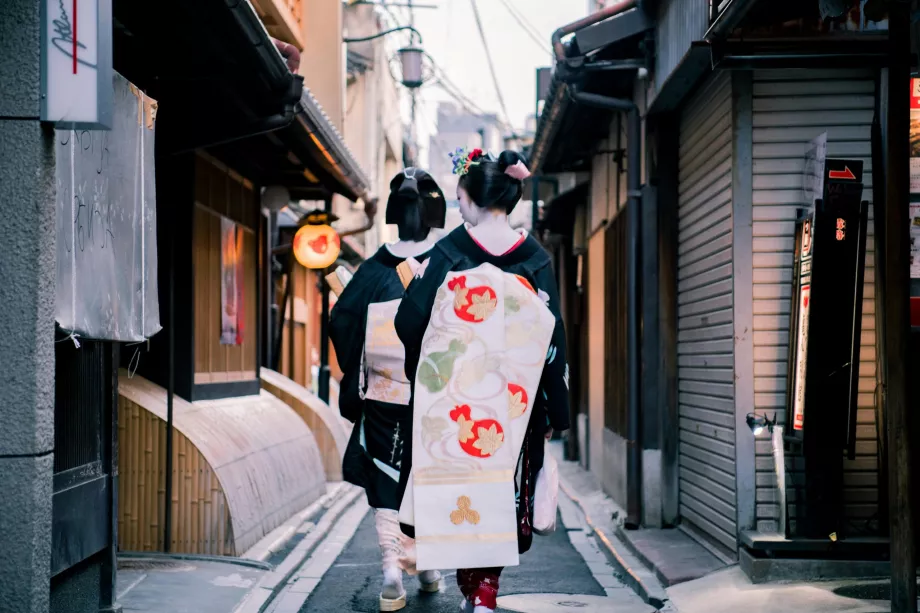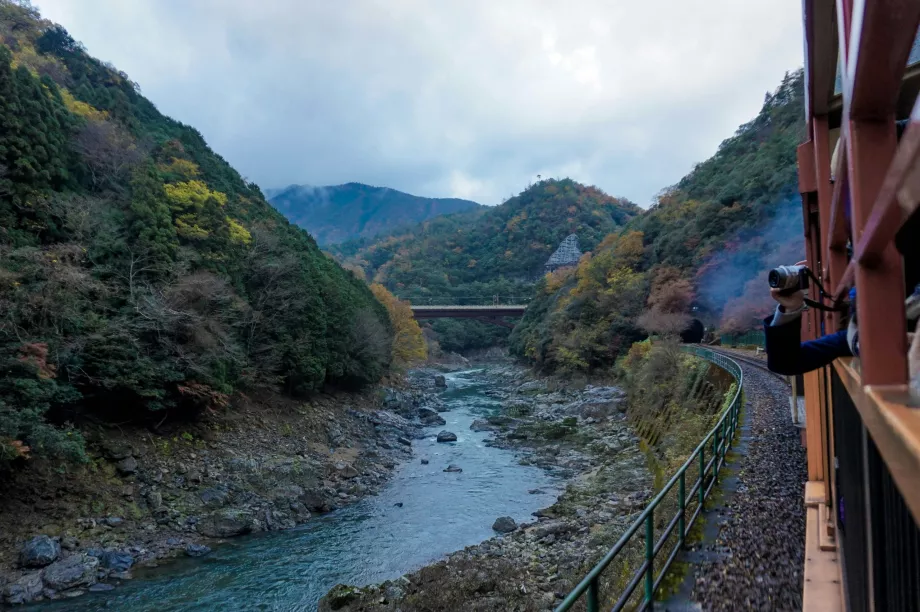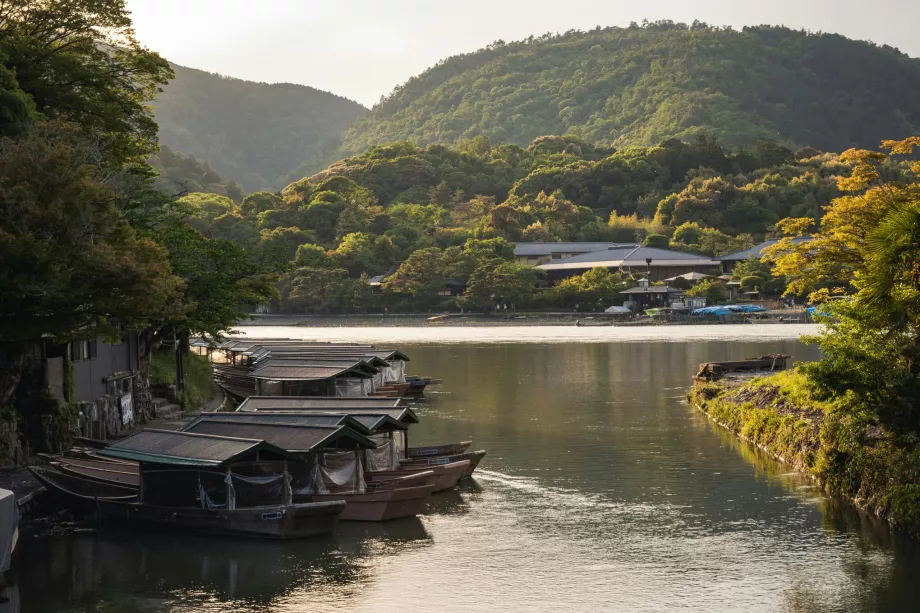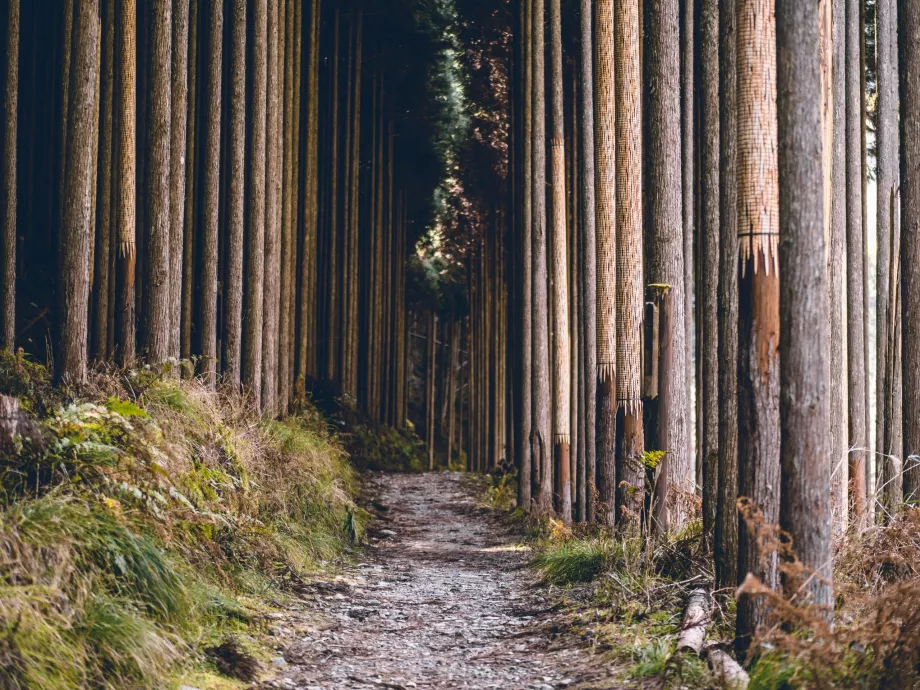What to do in Kyoto
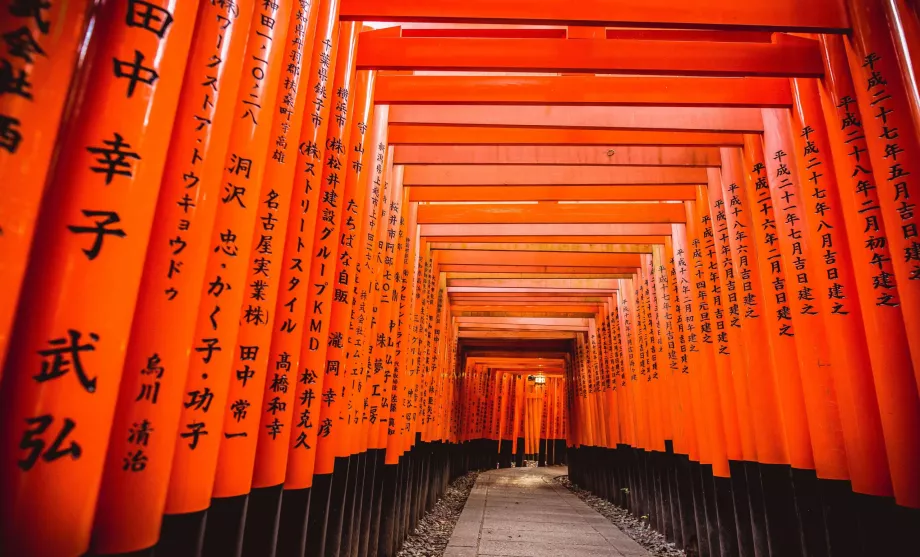
What activities to do in Kyoto and what did we do in the city?
Be prepared that Kyoto is a large city with an extraordinary concentration of sights and to see only the most famous ones, set aside at least 4 full days to visit.
Book the best experiences at klook.com
Historical monuments and temples
Kyoto was Japan's capital for over 1,000 years, making it one of the most valuable historical cities in Japan.
A total of 17 monuments in Kyoto are UNESCO World Heritage Sites, an extraordinary number even compared to the world's largest metropolises.
Kyoto has two picturesque historic districts , Gion and Higashiyama, where several shrines and temples are concentrated.
However, most of the temples are scattered variously around the city, both in the centre and on the outskirts, so you'll usually catch no more than 3-4 sights in a day.
The most famous shrine in Kyoto, and indeed in all of Japan, is Fushimi Inari-Taisha with its more than 10,000 black and red torii gates.
All the sights we visited in Kyoto are detailed in the What to See chapter.
The Geisha Experience
A geisha is a highly professional, intelligent and trained companion whose main goal is to entertain a closed society by dancing, singing, conversing, playing musical instruments or other arts.
Many tourists think that geishas also practice prostitution, but this is a big mistake and an insult to this esteemed craft.
This profession is inherently one of the symbols of Japan and the city of Kyoto is one of the main centres of geisha art.
In Kyoto, geisha are called geiko.
Where to meet a geisha in Kyoto?
The main centre where geisha live and learn their craft is the historic Gion district in the east of the city.
This is where you are most likely to see an authentic geisha on the street, especially on a Friday or Saturday in the early evening. Remember that it is highly inappropriate and even forbidden to take photos of geisha.
If you'd like to experience an evening with a geisha, you can book this experience, for example, through the popular website Klook.
There are two designated geisha in Kyoto - a geiko is an experienced geisha after several years of rigorous training, while a maiko is a novice geisha.
| Price from | Length | Booking | |
|---|---|---|---|
| Maiko Experience | 5 500 jpy | 1.5 hours | Book here |
| Dinner with Maiko | 44 000 jpy | 2.5 hours | Book here |
| Maiko or Geiko Machiya Tour | 35 000 jpy | 1.5 hrs | Book here |
| Tea Ceremony with Geiko | 12 000 jpy | 45 min | Book here |
Organised performances featuring various geisha arts take place at the Gion Corner Theatre every day at 6pm and 7pm, and admission costs from 5 500 jpy. You must always book online at kyoto-gioncorner.com.
Take a ride on the scenic railway
Between the tourist district of Arashiyama/Sagano and the town of Kameoka, a historic railway weaves through deep forests and the winding valley of the Hozugawa River Sagano Romantic Train.
Today, the modern railway runs through tunnels and over bridges, but the old line along the river remains and daily excursion trains run along it.
Trains usually run every day except Wednesday, but in the peak season of autumn-coloured leaves (November), for example, they run daily.
Despite the fact that the train runs from about 9:00 am to 7:00 pm every hour, it is necessary to book tickets in advance online. Trains tend to sell out especially in November and in spring (March, April) even several days in advance.
- One-way ticket - 880 jpy
- Ticket booking - klook.com
- Official website - sagano-kanko.co.jp
You can easily reach the starting station "Saga Arashiyama" near Bamboo Forest from downtown Kyoto by JR trains or buses 11, 92 and 93.
You can get back from Kameoka either by JR trains or a sightseeing cruise, see below.
Boat cruise on the Hozugawa River
Take a scenic train ride from Arashiyama to Kameoka City and sail back by boat!
You'll be floating down the river on traditional flat-bottomed boats steered by boatmen with oars and bamboo poles.
In places, the cruise can be a little more adrenaline-fuelled, but you won't be navigating any large rapids or weirs along the way and even a life jacket is not compulsory.
- Cruises daily from about 9:00 am to 3:30 pm (only 10:00 am to 2:30 pm in winter)
- Price - 6 000 jpy
- Online booking - klook.com
You can also buy your ticket on the spot, but during the high season (autumn when the leaves are colourful and spring when the sakura are in bloom) we definitely recommend booking online.
The dock is at Sanga Stadium about a 5 minute walk from the Kameoka modern JR train station.
The "Torkko Kameoka" scenic railway station is about 1.5 km away and can be reached by local bus for 350 jpy.
Hiking
Beautiful wooded hills densely covered with forests surround Kyoto on three sides and attract hiking.
There are two main hiking areas around Kyoto.
View the 10 best hotels in Kyoto
Kyoto Trail
A monumental 80km-plus trail through mountains and valleys with rivers and waterfalls follows the northern and eastern ring of hills around Kyoto.
The Kyoto Trail can be divided into many arbitrarily long sections. Parts of this trail can be used for just a short one-hour hike, or you can take a day trip.
Remember that the eastern part (Higashiyama) in particular is very hilly and you can expect considerable elevation changes.
The trail goes all the way out of town through deep forests, but there are often beautiful views. The Kyoto Trail can be reached by public transport to several places:
- Eizan Railway + Eizan cable car to Mount Hiei
- Total 1 180 jpy for the train and two cable cars (neither the JR Pass nor the Kansai Railway Pass apply here
- Trains run from Demachiyanagi Station, which can be reached by buses on lines 3, 7, 102, 201, 203 or Keihan Railway trains
- Eizan Railway to NinoseStation
- Total 410 jpy (neither the JR Pass nor the Kansai Railway Pass apply here
- Trains run from Demachiyanagi Station, which can be reached by buses of lines 3, 7, 102, 201, 203 or Keihan Railway trains
- Metro Red Line to Keage Station
- Buses and trains to Fushimi Inari-Taisha Shrine
Kiyotaki River Trail
A shorter trail through the scenic Kiyotaki River valley in the west of Kyoto.
Although it is formally part of the Kyoto Trail, it is not directly connected to the main part of the trail.
Both ends of the trail are easily accessible by bus lines, on which a full-day bus + subway ticket is valid.
- North end (Toganoo) - Line 8 (towards both the red and green metro lines) or the West JR Bus line "Kyoto Station - Toganoo"
- South end (Kiyotaki) - lines 92 and 94 from Arashiyama area
Any questions left?
If you have any questions or comments about the article...

